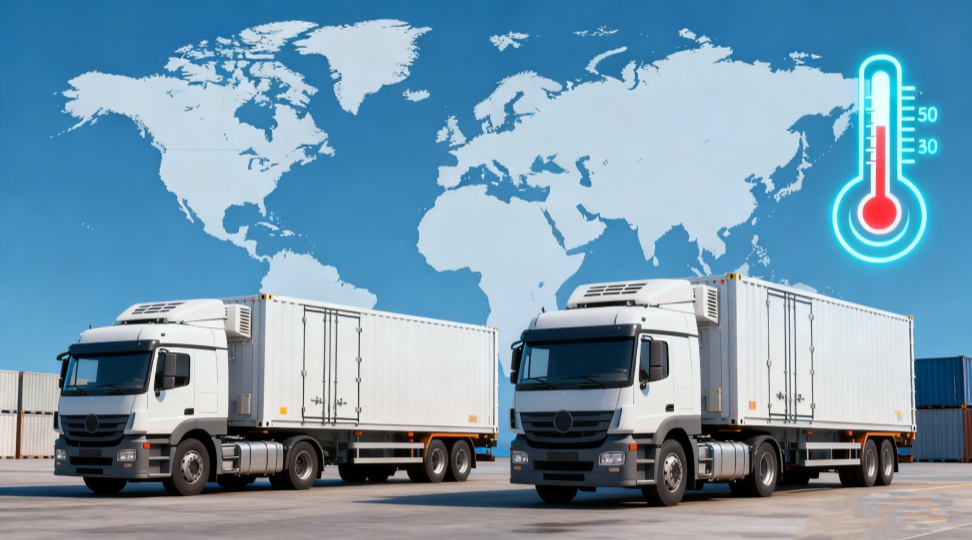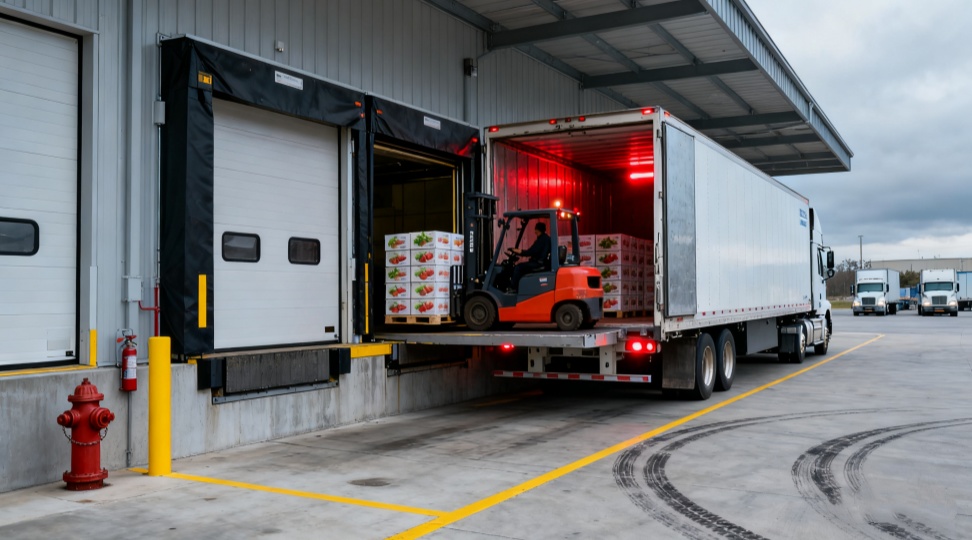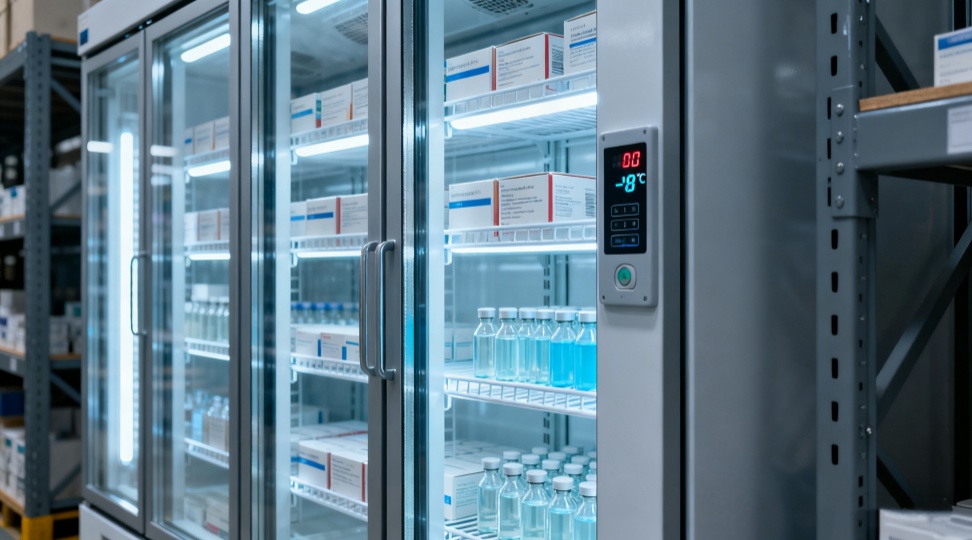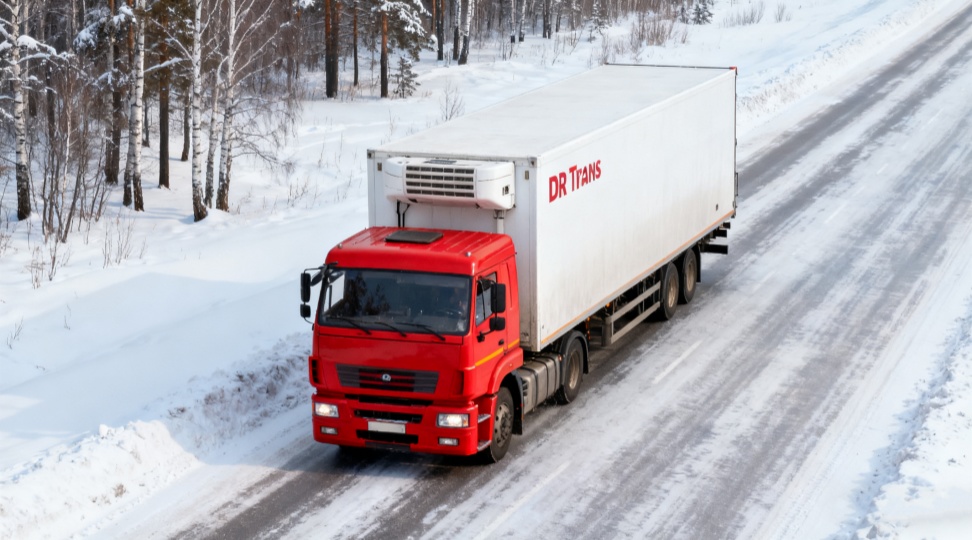Temperature-controlled logistics (also known as climate-controlled shipping) ensures that sensitive goods stay within the required temperature range throughout the supply chain. In practice, this covers both refrigerated shipping and heated service. In our interconnected world, goods travel across continents daily. But what happens when those goods are sensitive to heat or cold? A box of chocolates melting in the sun or a life-saving vaccine freezing during transit isn't just an inconvenience—it's a significant loss. This is where the precision of temperature-controlled shipping becomes critical.
At its core, temperature-controlled logistics is a specialized supply chain management method. It ensures that products are stored and transported within a specific, pre-set temperature range from the point of origin to the final destination. Unlike standard shipping, which doesn't account for climate changes inside a truck or cargo hold, this process actively manages the environment around the clock.

Think of it as a mobile, sophisticated climate control system for your products. It’s not just about keeping things cold; it’s about maintaining a consistent environment, whether that means chilled, frozen, or even warmed. This is the foundation of reliable temperature-controlled international shipping, guaranteeing that your products arrive in the same perfect condition they were in when they left your warehouse.
The choice between cold and hot temperature-controlled delivery services depends entirely on the nature of your goods. The goal is always to preserve the product's integrity, safety, and efficacy.
Cold Chain Shipping (Refrigerated and Frozen)
This is the most common form of climate-controlled shipping. It involves maintaining products at a temperature below the ambient outside temperature.
Refrigerated Shipping (2°C to 8°C): This range is crucial for many perishables and pharmaceuticals.
Frozen Shipping (e.g., -15°C to -25°C): Used for goods that need to be kept solidly frozen.
Deep Frozen Shipping (e.g., -50°C and below): For highly sensitive products like some vaccines and specialty chemicals.
Heated Service (Protecting from Cold)
Less commonly discussed but equally important is the heated service for temperature-controlled cargo. This involves protecting goods from becoming too cold, which can be just as damaging as heat.
Why it's needed: Some liquids, like certain chemicals or palm oil, can solidify or crystallize if exposed to low temperatures. Electronics can also be damaged by condensation forming inside components when moving from a cold environment to a warm one. A consistent, ambient, or warm temperature is vital.
Each approach relies on equipment and packing: reefers and coolants for cold, or insulated/thermal trailers and heating for warm shipments. Below is a quick comparison:
| Feature | Refrigerated Shipping (Cold) | Heated Shipping (Warm) |
|---|---|---|
| Temperature Range | Typically +2°C to +8°C (chilled) or below –18°C (frozen) | Generally +5°C and above (to prevent freezing) |
| Typical Cargo | Perishables (food, flowers, vaccines) | Susceptible items (chemicals, batteries, paints) |
| Equipment | Refrigerated trucks, rail cars, or containers with AC units | Insulated trailers or containers with heaters or hot packs |
| Use Case | Fresh produce, frozen foods, temperature-sensitive drugs | Lubricants, certain chemicals, and wind turbine blades in cold climates |
Choosing cold or heated shipping depends on knowing how temperature affects the cargo. A well-chosen climate-controlled freight plan prevents losses, be it temperature-controlled shipping with a reefer unit or a specialized heated transport service.
Modern temperature-controlled shipping relies on specialized equipment and monitoring at every stage:
Refrigerated Vehicles and Containers: Trucks (reefers), rail boxcars, or cargo vans have built-in refrigeration units powered by the engine or independent generators. These units maintain the set chill or freezer temperature continuously. For long-haul routes, “active” refrigerated containers on ships or aircraft have their own power supply (or plug in on-deck).
Insulated (Passive) Containers: For smaller shipments or last-mile delivery, insulated coolers or thermal boxes (with foam and bubble insulation) are used. Shippers pack these boxes with gel packs or dry ice to create a controlled environment. Dry ice in particular keeps goods frozen without electricity. (Note: Dry ice is considered a hazardous material and must be labeled.)
Heated Trailers: For warm trucking, insulated trailers are equipped with small heaters or fuel-fired engines that keep the interior above freezing. These heated services remove the risk of freezing during winter or high-altitude transit.
Temperature Monitoring: Sensors, data loggers, and IoT devices track the cargo’s temperature in real-time. Modern carriers often provide live GPS and temperature reports, so any deviation triggers an alert. This visibility lets shippers adjust en route and ensures full transparency of the cold chain.

By combining the right vehicle (reefers or thermal trucks) with proper packaging (insulation, gel packs, dry ice) and technology, climate-controlled shipping is achieved. The process is carefully planned: carriers coordinate insulation, setpoint temperatures, and transit times to protect temperature-controlled cargo.
Different products need different temperature windows. Common categories include:
Frozen (<–18°C): Ice cream, frozen meats, seafood, and pharmaceuticals requiring deep freeze. These need powered refrigeration or ample dry ice.
Chilled (2–8°C): Most refrigerated foods (dairy, fruits, vegetables, beverages) and vaccines. Cargo holds or trucks are set to around 4°C.
Controlled Ambient (15–25°C): Sensitive electronics, paper goods, normal climate cosmetics, or pantry items that must not freeze or overheat. They often ship in ventilated but unheated containers.
Heated (+5°C or higher): Chemicals, paints, liquid detergents, and batteries that would be damaged by cold. Heated trailers usually aim for around +5°C to +10 °C, depending on the commodity.
Standard Ranges: As one logistics guide notes, refrigerated shipments typically maintain about 2–8°C, while controlled-ambient cargo is kept near 15–25°C. These industry benchmarks ensure that temperature-sensitive cargo like food and vaccines stays safe. (Exact setpoints are always specified by the shipper based on product needs.)
Perishable Foods: Fresh fruits, vegetables, dairy, meat, and seafood.
Pharmaceuticals: Vaccines, insulin, trial drugs, and other medicines.
Biologics: Blood plasma, tissue samples, and laboratory reagents.
Certain Chemicals and Flowers.
Certain Chemicals and Oils: Those with a high melting point that could solidify.
Electronics and High-Tech Equipment: To prevent condensation and cold-related damage.
Some Food Products: Like fresh produce from tropical regions that can suffer "chilling injury."
Artwork and Antiques: To protect from moisture and temperature fluctuations that can cause warping or mold.
This industry is highly regulated to ensure public safety and product integrity. When you hire a provider for temperature-controlled delivery services, you are trusting them to comply with a web of international standards.
Key Global Standards:
| Standard | Full Name | What It Governs |
|---|---|---|
| GDP | Good Distribution Practice | Provides guidelines for the proper distribution of medicinal products for human use, ensuring quality and integrity are maintained throughout the supply chain. |
| HACCP | Hazard Analysis Critical Control Point | A systematic, preventive approach to food safety that identifies and controls biological, chemical, and physical hazards. |
| FSMA | Food Safety Modernization Act (US) | Focuses on preventing food safety problems in the US supply chain, including strict rules for sanitary transport. |
Compliance isn't optional. A reputable temperature-controlled shipping partner will have certifications and audited processes in place, particularly for temperature-controlled international shipping, where regulations can vary by country. They must provide documented proof that the temperature-sensitive cargo was handled correctly at every stage.

Temperature-controlled logistics uses multiple modes to serve global trade:
Road transport is the backbone of cold chain logistics. Special refrigerated trucks and trailers (reefer vans) have insulated cargo compartments with refrigeration units. These reefers plug into the engine or a generator to chill goods at the required temperature. The image above shows a fleet of temperature-controlled vans ready for service. Trucking services offer FTL (full truckload) or LTL (less-than-truckload) options for cold freight. Multi-temperature trailers can even carry frozen meat at –18°C and chilled produce in the same vehicle. Temperature logging devices record conditions continuously, so shippers know that the refrigerator has been on.
For shorter distances or smaller packages, shippers use passive solutions. Insulated foam coolers, thermal bubble wrap, and gel packs (or dry ice) keep items cold without power. These containers can be hand-carried or moved by courier. They maintain setpoints for several hours or days, depending on pack size. Passive containers are ideal for same-day deliveries or last-mile cold shipping. They rely on chemical coolants rather than electricity to preserve the cargo’s temperature.
Larger than passive boxes, active containers have built-in refrigeration. They are used in rail, air, and ocean shipping of big loads. For example, a reefer container on a cargo ship is plugged into the vessel’s power to run its cooling unit. On airplanes, palletized reefer ULDs (Unit Load Devices) keep vaccines or seafood chilled in flight. Active containers let sea or air carriers treat the shipment like a rolling fridge. These solutions underpin major trade lanes, such as China-Europe cold chain routes that move tons of perishables by rail.
Air freight is often chosen for urgent temperature-sensitive deliveries. Specialized cargo planes or charter flights can be fully refrigerated, enabling temperature-controlled shipping of delicate items across continents in a day. For example, medicines and biotech products frequently travel by air in active cooling pallets. The image above shows ground staff preparing temperature-sensitive pallets for flight. Air cargo offers the quickest transit (reducing temperature risk), but at a higher cost than sea or rail.
Long-haul routes use refrigerated rail cars and ocean containers. Modern reefer containers on ships keep goods at setpoints using built-in coolers. Rail freight often uses temperature-controlled boxcars or piggyback reefer trucks on flatcars. While slower, these modes move large volumes economically. For international cold chain (e.g., Asia-Europe), rail is growing in popularity for its balance of speed and cost. DR Trans, for instance, offers Cold Chain Rail Transport between China and Europe, efficiently connecting large-scale goods with stable temperature-controlled cargo handling.
Q: What is temperature-controlled freight shipping?
A: It is the shipping of goods in vehicles or containers with regulated climate settings to preserve perishable products. This covers refrigerated shipping for cold goods and heated service for cargo that must stay warm. For example, carrying vaccines, food, chemicals, or electronics under strict temperature control ensures they arrive safely and effectively.
Q: What temperature ranges are maintained in such shipments?
A: It depends on the product. Common regimes include Frozen (typically –18°C or colder), Refrigerated (around +2°C to +8°C), Controlled Ambient (~15–25°C), and Heated (+5°C or above). For instance, many pharmaceuticals are transported at 2–8°C while general ambient shipments stay around 15–25°C.
Q: What regulations govern temperature-controlled shipping?
A: Regulations vary by cargo. Dry ice must follow DOT (49 CFR) and IATA rules as a hazardous material. Temperature-sensitive drugs and biologics must comply with health authority standards (e.g., FDA regulations, WHO GDP, IATA’s TCR guidelines). Carriers use certified equipment (like ATP-rated trucks) and follow labeling/record-keeping rules to meet global standards.
Q: How is the cargo’s temperature monitored during transit?
A: Carriers often install IoT sensors, GPS trackers, and data loggers in shipping units. These devices continuously record temperature and location, sending real-time alerts if values deviate. This visibility allows logistics teams to intervene promptly, ensuring the cold (or warm) chain is never broken until delivery.
Q: What is heated service?
A: Heated service is a special segment of temperature-controlled shipping that keeps freight warm. It is used when goods must be above freezing. For example, an insulated trailer with a heating element may be used in winter to protect lubricants, paints, or certain food items. According to logistics experts, heated trucking ensures a shipment “remains warm” on routes through subzero conditions.
Q: What types of carriers provide these services?
A: Many freight companies offer dedicated temperature-controlled international shipping services. For road transport, we use fleets of refrigerated vans and heated trucks. For rail, we use cold storage cars or plug-in containers. For air and sea, we partner with carriers that handle active temperature-controlled containers. The key is choosing carriers with refrigerated, climate-controlled freight experience and certified processes.
DR Trans is committed to providing professional temperature-controlled freight solutions for our global clients. Whether you’re shipping food, pharmaceuticals, chemicals, or electronic products, we design precise and efficient transport plans covering Europe, Central Asia, and Russia.

We have completed cold chain shipping from China to Russia for pet food, frost-protection transport for lithium batteries, and pharmaceutical cold chain delivery. In addition, we offer the following cold chain logistics services:
China–Europe TIR Cold Chain Transport
Europe–China Cold Chain Rail Transport
China–Russia Pharmaceutical Cold Chain Road Transport Service
Whether by road, rail, sea, or air, DR Trans ensures your temperature-controlled international shipping is safe, compliant, and transparent.
Contact us today to learn more about our professional climate-controlled shipping solutions.